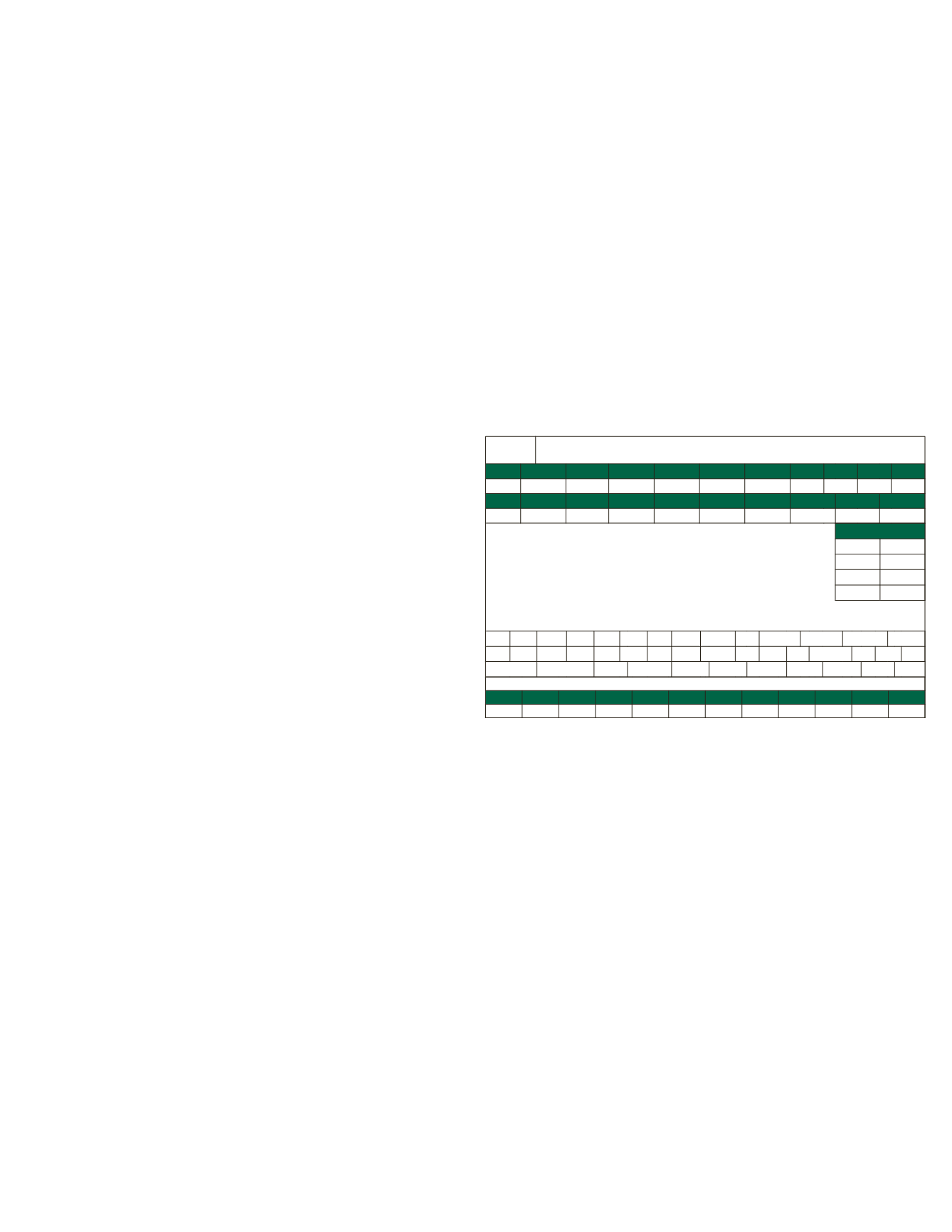
Expected Progeny Difference
(EPD)
is the prediction of how future progeny of each animal are expected to
perform relative to the progeny of other animals listed in the database.
EPDs are expressed in units of measure for the trait, plus or minus.
Interim EPDs may appear for young animals when their performance
is yet to be incorporated into theAmericanAngus Association National
Cattle Evaluation (NCE) procedures. This EPD will be preceded by
an “I,” and may or may not include the animal’s own performance
record for a particular trait, depending on its availability, appropriate
contemporary grouping, or data edits needed for NCE.
4
$Values
are multi-trait selection indexes, expressed in dollars per head,
to assist beef producers by adding simplicity to genetic selection
decisions. The $Value is an estimate of how future progeny of each
sire are expected to perform, on average, compared to progeny of
other sires in the database if the sires were randomly mated to cows
and if calves were exposed to the same environment.
MATERNAL TRAITS
Calving ease maternal
(CEM)
is expressed as a difference in percentage of unassisted births with a
higher value indicating greater calving ease in first-calf daughters. It
predicts the average ease with which a sire’s daughters will calve as
first-calf heifers when compared to daughters of other sires.
Maternal milk EPD
(Milk)
expressed in pounds of calf weaned, is a predictor of a sire’s genetic
merit for milk and mothering ability as expressed in his daughters
compared to daughters of other sires. In other words, it is that part of
a calf’s weaning weight attributed to milk and mothering ability.
Cow energy value
($EN)
expressed in dollar savings per cow per year, assesses differences in
cow energy requirements as an expected dollar savings difference in
daughters of sires. A larger value is more favorable when comparing
two animals (more dollars saved on feed energy expenses).
Components for computing the cow $EN savings difference include
lactation energy requirements and energy costs associated with
differences in mature cow size.
GROWTH TRAITS
Calving ease direct
(CED)
expressed as a difference in percentage of unassisted births, with
a higher value indicating greater calving ease in first-calf heifers. It
predicts the average difference in ease with which a sire’s calves will
be born when he is bred to first-calf heifers.
Birth weight EPD
(BW)
expressed in pounds, is a predictor of a sire’s ability to transmit birth
weight to his progeny compared to that of other sires.
Weaning weight EPD
(WW)
expressed in pounds, is a predictor of a sire’s ability to transmit
weaning growth to his progeny compared to that of other sires.
Yearling weight EPD
(YW)
expressed in pounds, is a predictor of a sire’s ability to transmit
yearling growth to his progeny compared to that of other sires.
Residual Average Daily Gain
(RADG)
expressed in pounds per day, is a predictor of a sire’s genetic ability
for postweaning gain in future progeny compared to that of other
sires, given a constant amount of feed consumed.
Scrotal circumference EPD
(SC)
expressed in centimeters, is a predictor of a sire’s ability to transmit
scrotal size compared to that of other sires.
Docility EPD
(DOC)
expressed as a difference in yearling cattle temperament, with a
higher value indicating more favorable docility. It predicts the average
difference of progeny from a sire in comparison with another sire’s
calves. In herds where temperament problems are not an issue, this
expected difference would not be realized.
Angus Bull Sale, Ellsworth KS
April 3, 2017
CARCASS TRAITS
Carcass weight EPD
(CW)
expressed in pounds, is a predictor of the differences in hot carcass
weight of a sire’s progeny compared to progeny of other sires.
Marbling EPD
(Marb)
expressed as a fraction of USDA marbling score, is a predictor of the
difference in marbling of a sire’s progeny compared to progeny of
other sires.
Ribeye area EPD
(RE)
expressed in square inches, is a predictor of the difference in ribeye
area of a sire’s progeny compared to progeny of other sires.
Fat thickness EPD
(Fat)
expressed in inches, is a predictor of the differences in external fat
thickness at the 12th rib (as measured between the 12th and 13th
ribs) of a sire’s progeny compared to progeny of other sires.
Breed Average EPDs Non Parent
Bulls for the Spring of 2017
Reading Animal Information
BW WW
Rat.
YW
Rat.
Adj. Ht
Adj. SC
IMF
Rat.
REA
Rat.
Rib Fat
Rat.
Rump Fat
Rat.
Dam’s BD
Wt
PR
WR
YR
1
Bulls on Test
ADG 3.50
DMI
24.5
RFI
0
F:G 6.00
CED BW WW YW RADG DMI Scrotal DOC CEM Milk $EN
6 +1.2 +48 +85 +0.21 +.019 +0.77 14 8 +24 -4.18
CW Marb RE Fat
$W $F $G $QG $YG $Beef
33 0.56 0.51 0.02 43.34 39.20 31.86 28.56 3.30 105.91
HD50K Percentile Rank
CED BW WW YW DMI CEM Milk CW Marb RE Fat Tend
50 50 50 50 50 50 50 50 50 50 50 50


